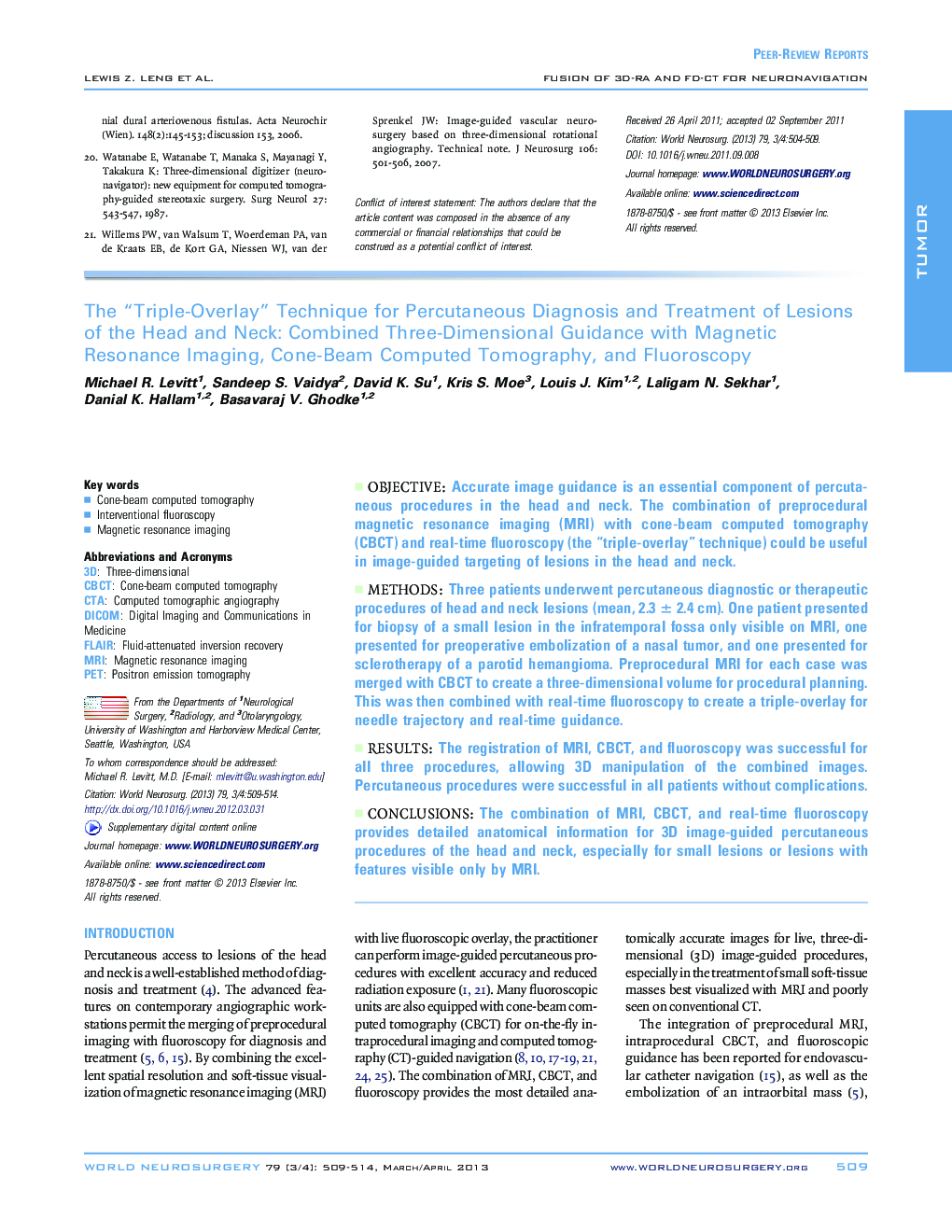| Article ID | Journal | Published Year | Pages | File Type |
|---|---|---|---|---|
| 3096198 | World Neurosurgery | 2013 | 6 Pages |
ObjectiveAccurate image guidance is an essential component of percutaneous procedures in the head and neck. The combination of preprocedural magnetic resonance imaging (MRI) with cone-beam computed tomography (CBCT) and real-time fluoroscopy (the “triple-overlay” technique) could be useful in image-guided targeting of lesions in the head and neck.MethodsThree patients underwent percutaneous diagnostic or therapeutic procedures of head and neck lesions (mean, 2.3 ± 2.4 cm). One patient presented for biopsy of a small lesion in the infratemporal fossa only visible on MRI, one presented for preoperative embolization of a nasal tumor, and one presented for sclerotherapy of a parotid hemangioma. Preprocedural MRI for each case was merged with CBCT to create a three-dimensional volume for procedural planning. This was then combined with real-time fluoroscopy to create a triple-overlay for needle trajectory and real-time guidance.ResultsThe registration of MRI, CBCT, and fluoroscopy was successful for all three procedures, allowing 3D manipulation of the combined images. Percutaneous procedures were successful in all patients without complications.ConclusionsThe combination of MRI, CBCT, and real-time fluoroscopy provides detailed anatomical information for 3D image-guided percutaneous procedures of the head and neck, especially for small lesions or lesions with features visible only by MRI.
